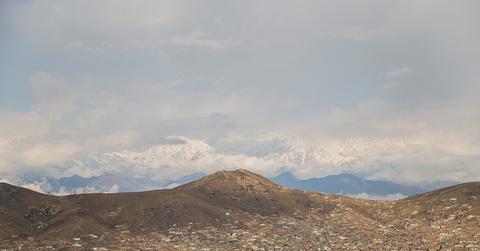Afghanistan Is Investing In Solar Power To Give More Citizens Electricity
The Asian Development Bank is spending $45 million for Afghanistan to build a 20-megawatt solar power plant in an effort to expand its energy capabilities. As of now, Afghanistan imports over 70 percent of its electricity.
Updated May 18 2019, 2:41 p.m. ET
Afghanistan has big demand for power. Just 15 years ago, only five percent of the country's citizens had access to electricity, and while today just 32 percent of people have access to grid-connected power, the demand is growing by 25 percent annually, putting pressure on the nation to up their power supply.
This, however, is a pricey problem: Afghanistan imports 73 percent of its power from surrounding countries. So in 2008, the government allocated $2 billion to expand its onsite energy capabilities, including through conventional means like coal. But a large portion of the money will be spent on more eco-friendly solutions: wind and solar.
For the latter, the Asian Development Bank has announced that it will spend $45 million on a 20-megawatt solar power plant in Kabul’s Surobi district. The country’s total demand for power is about 3 gigawatts, with domestic generation at 300 megawatts, so while the solar power plant will solve just a portion of the problem, it's a telling turn of events for renewables.
"The demand for power is rapidly growing across Afghanistan,” Samuel Tumiwa, a country director at The Asian Development bank said in the statement. “The new on-grid solar power generation project, which is the largest of its kind in Afghanistan, will not only provide access to a clean and reliable power supply, but also demonstrate the viability of future renewable energy investments.”
The plant will generate at least 43,000 megawatts-hours of power and will offset the equivalent of 13,000 tons of carbon dioxide in the first year after it is complete, which should be about 18 months after final contracts are signed, a spokesman of government-owned utility Da Afghanistan Breshna Sherkat told Bloomberg. Once completed, it will satisfy part of the electricity needs for Kabul as well as the eastern province of Nangarhar and Laghman.
This turn towards solar makes sense on several levels for Afghanistan. For one, the cost of solar equipment is rapidly declining (prices for solar panels have dropped 62 percent over the past five years, according to Bloomberg) as popularity grows and systems become more efficient. Now, what was once seen as an expensive way to create power is a viable option for developing countries looking to build out their infrastructure.
Plus, Afghanistan has an abundance of sunlight.
"Considering 300 sunny days per year with free solar irradiation to generate solar power, it makes Afghanistan an attractive country for implementing solar power projects," Finance Minister Eklil Hakimi said in the statement.
Though the plant in Kabul will be the largest in the country, it's not the first. In September, Dynasty Oil & Gas PVT Ltd. of India began construction on a 10-megawatt solar power plant in southern Kandahar city, funded by the U.S. Agency for International Development. Additionally, the country is looking to capture an estimated 158 gigawatts of wind energy as part of its master energy plan.
